You are reading the older HTML site
Positive Feedback
ISSUE
3
Winston Ma's Remarkable Listening Room: Images and Some Design Notes
by David W. Robinson & Winston Ma
(All photographs and digital image processing by Robinson)
Any experienced audiophile will tell you that one of the most important components of all is one that is often overlooked: the listening room itself. Having owned and done some very limited design consulting on a couple of dedicated listening rooms (with thanks to friends like George Cardas, Michael Green, Jennifer Crock, and others), I can appreciate what a fine room can do for one’s audio voyage.
One of the most impressive listening rooms that I’ve ever seen is the one that Winston Ma of First Impression Music (http://www.fimpression.com) designed and built. Positive Feedback Online has been sharing an extended interview that Rick Gardner and I conducted with Winston a while back (see Issues 1 and 2 of PFO). As an adjunct article, I’d like to share some photographs and dimensional specifics of Winston’s extraordinary effort, so that our readers understand more of what he has done.
I asked Winston to contribute some notes for this article. His edited comments appear below.
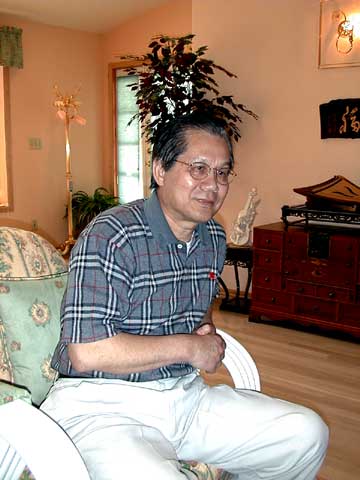
The foundation of my listening room was so designed to achieve the following:
The listening room must be coupled to mother earth to diffuse acoustical energy.
At the same time, the room must also be isolated from mother earth to avoid the rumbles and noises arising from various ambient sources, such as traffic and heavy machinery.
The construction of the structure must be very rigid. It must be "dead" in that it will not resonate with sound energy, and thus allow us to minimize boomy and uncontrolled bass. However (and this is the tricky thing), it must at the same time be live enough, but not exhibit "ringing," so that it will not absorb low bass sound energy.
The purpose is therefore to enhance clean, solid and very low bass reproduction to match the "golden ratio" design, i.e., construction of a room with a length longer than 25 feet in order to produce 20 Hz or lower bass, since the wave length of 20 Hz is 25’.
The foundation for the music room was constructed to try to achieve the above perimeters in the following way:
A 6" thickness of reinforced concrete walls 4 feet high was built for the foundation of the site.
The ground inside the foundation wall was compressed by machine.
The first sub-slab layer was filled to a depth of 1 foot with rough gravels, then machine compressed.
This was followed with a second layer of fine gravels, and was again machine compressed.
Thereafter came a third layer of rough sand, which was also subsequently machined compressed.
We followed this with a fourth layer of fine sand, which was machined compressed. By now the ground was very solid and acoustically "dead."
A special kind of 2" thick rigid polyfoam was then laid to cover all the exposed site area with its four layers. The ground level had to be flat for us to install the polyfoam. This kind of rigid foam is meant to stand against deterioration and weathering for at least 25 years. The 2" thick special polyfoam has an added value: to prevent humidity from going through the concrete platform into the room.
The sides of the inner foundation walls were padded with a special wood-based soft board as a kind of insulation from the concrete wall.
A 6" reinforced concrete was poured into the trough, i.e., over the polyfoam inside the insulated wall. The result was that this piece of concrete slab, in principle, was "floating" on the foam, was also inside the soft wood-based material as a form of isolation from the outside world, and was at the same time staying there very rigidly. Resonance, rumble, or noise from outside the wall or under the ground is therefore reduced to a minimum due to this acoustically insulating effect.
A "room-within-a-room" was built on this floating concrete slab. Great care was taken that the foundation, the studs, and walls of the outside room were affixed to the concrete wall of the foundation, while the studs and walls of the inside room was built on the floating slab, so that the ouside room did not touch the inside room to avoid transmission of vibration energy from outside.
As a final note, the studs used were 6" x 4" instead of the standard "4 x 4". Special insulation material was also used within the room walls.
The Dimensions of Winston Ma's Listening Room:
Front wall (loudspeaker end): 10’ 8.37" high
Rear wall (listener end): about 16’ high
10 degree ascending angle in ceiling height from the speaker end of the room (front) to
the listening end of the room (rear)
Width: 17� 2.25"
Length: 27� 8.32"
These dimensions had to be absolutely accurate, and so were checked by a laser measuring device. Note that the "golden ratio" of 1:1.618:2.588 (height x width x depth) is employed which is more precise than the normal golden ratio commonly used, i.e.: 1:1.6:2.5 (direct proportional calculation).
Some additional room photos and notes
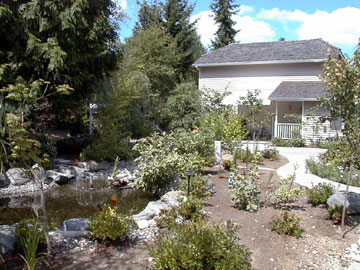
There is a landscaped garden and pond outside of the listening room, which helps to prepare visitors for the experience of relaxed listening. Winston explains that achieving a calm mind and spirit for listening is very important to him.
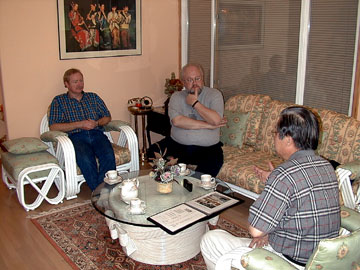
The listening room is separated from the rest of the house by a very attractive and appealing sunroom. This not only gives guests a place to converse without disturbing those who wish to listen to music (the bane of audio clubs everywhere!), but acoustically decouples the listening room from the rest of the house. You can get a sense of the room in this photograph.
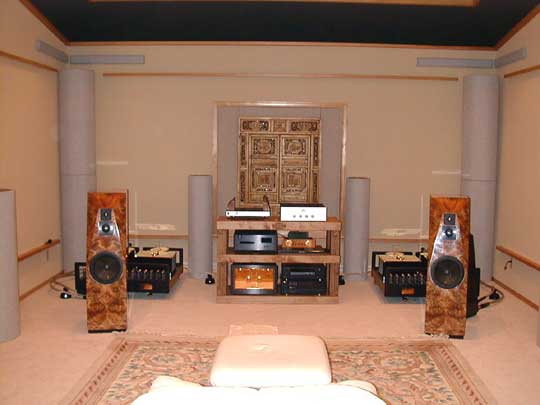
The view from the listening position towards the rear (speaker end) of the room is very fine indeed!
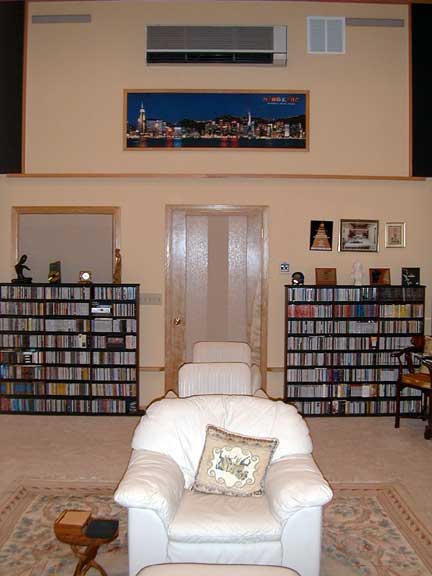
So is the view in the other direction! This view is from the rear towards the front (listener) end of the room.
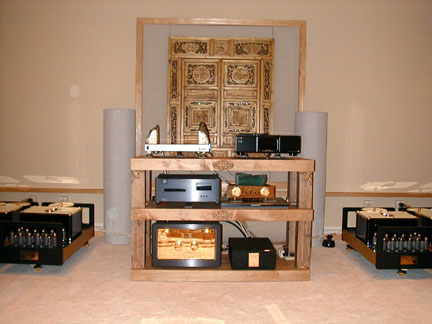
Here’s a close-up of the equipment rack and Paul Weitzel’s glorious amplifiers…
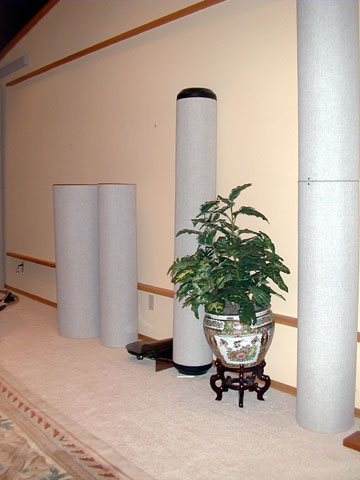
A number of room treatments are in evidence in the room. The positioning of these devices was approximated by calculation, and then was fine-tuned by ear.
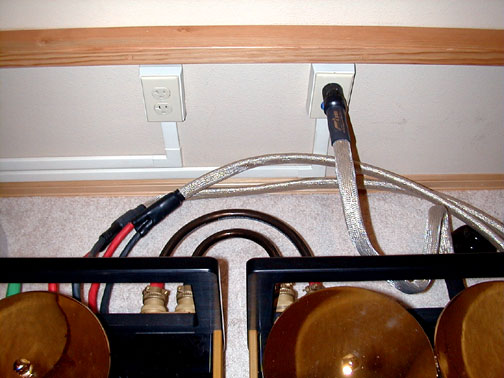
Fully dedicated power, carefully installed with dedicated panels, is in evidence at key points in the room.
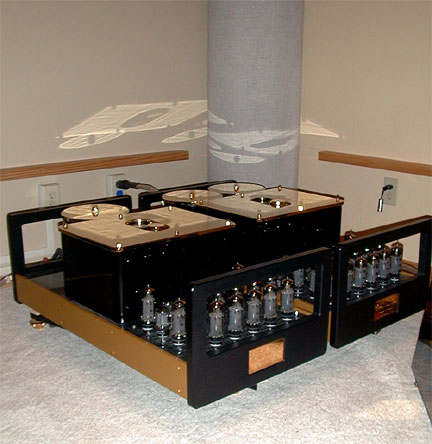
Paul Weitzel’s stunning Tube Research amplifiers provide extraordinarily beautiful power (800 Watts per channel of pure class A!) for Winston’s room.
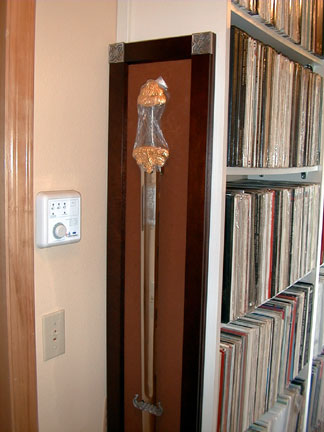
Winston uses a separate climate control system with exceptionally quiet air flow. The thermostat is placed in his media room, seen in the photo below. (A beautiful sword hangs there… don’t ever think of trespassing in Winston’s room!)
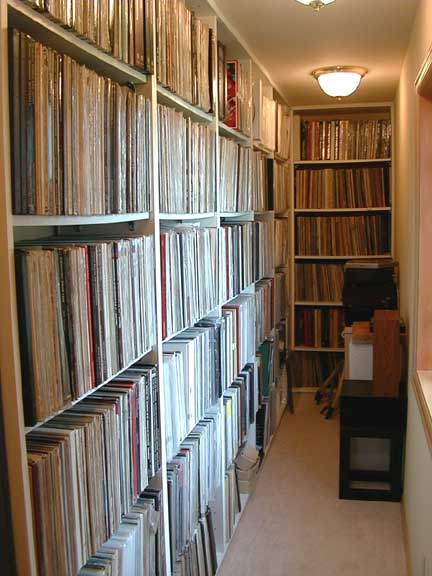
Winston has an imposing media storage room at one end of his listening room—a very intelligent use of the space.
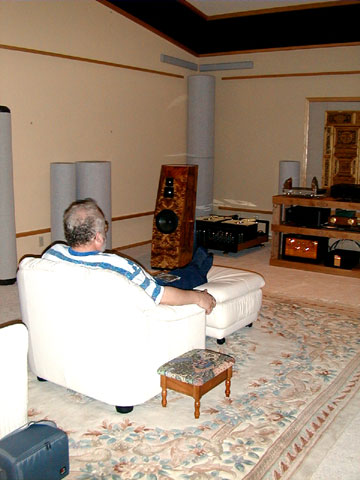
Positive Feedback Online’s Rick Gardner enjoys listening in one of Winston’s listening chairs.
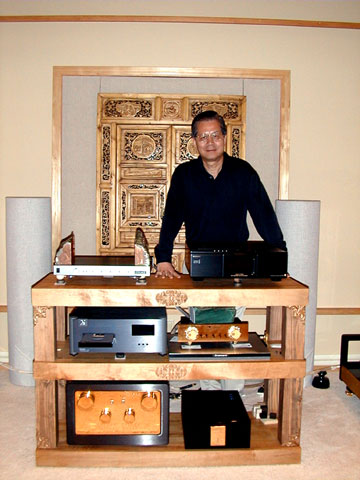
I photographed Winston standing in front of his carved panels for the cover of Positive Feedback, Vol. 9, No. 2. What we didn’t mention at that time was that this beautiful woodwork doubles as a cover for an ingenious acoustical trap behind it!
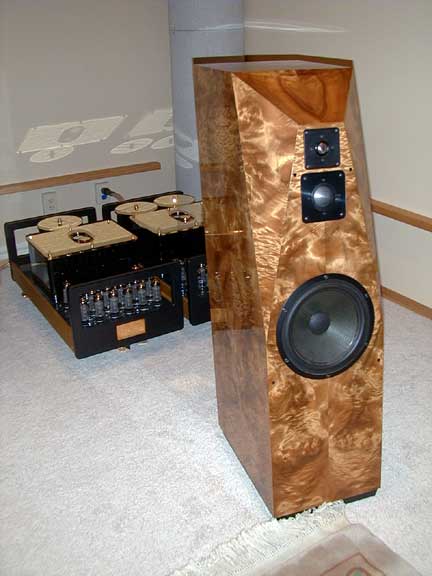
I can personally attest that the results in Winston’s room are nothing less than truly magnificent. Emerging from a profound silence, the sound of the music (Winston has LP, SACD, and CD playback in his system) is awesome: clear, clean, rich, and extended. The mid’s and high frequencies are spot on; the bass is deep and effortless. At the time of our last visit, Winston was using the Avalon Eidolon as his speaker; it is my understanding that he has since upgraded to the Eidolon Diamonds. In this photograph, a pair of Paul Weitzel’s Tube Research monoblocks is behind the Avalon.
While most of us cannot achieve this level of accomplishment in our rooms, Winston’s design encourages audiophiles to press for every advantage feasible when they have the opportunity to construct—or remodel—a dedicated room. Meanwhile, his work will remain a benchmark worthy of admiration and emulation.
